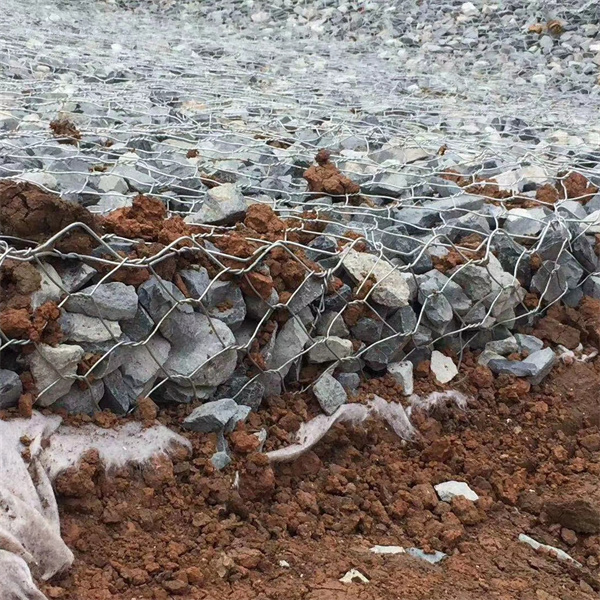Dec . 13, 2024 21:12 Back to list
Suppliers of Gabion Walls for Effective Retaining Wall Solutions and Landscaping
Gabion Walls as Retaining Wall Solutions A Comprehensive Overview
In recent years, the construction industry has increasingly turned its attention to gabion walls as an effective solution for retaining wall applications. Gabion walls are structures made from wire mesh cages filled with rocks, stones, or other materials. They not only offer practical benefits but also aesthetic versatility, making them an ideal choice for various landscaping and civil engineering projects. This article will explore the advantages of gabion walls, their applications, and considerations when choosing suppliers for gabion wall solutions.
The Advantages of Gabion Walls
One of the primary advantages of gabion walls is their strength and durability. The wire mesh cages used in gabion construction are designed to withstand the pressure from soil and water, making them highly effective in stabilizing slopes and preventing erosion. Additionally, the stones used to fill the cages are typically sourced locally, which means that gabion walls can often be constructed using sustainable materials.
Another significant benefit of gabion walls is their permeability. Unlike traditional concrete retaining walls, gabion structures allow water to flow through, reducing hydrostatic pressure on the wall. This property is particularly advantageous in areas prone to heavy rainfall, as it helps to mitigate water buildup behind the wall, lowering the risk of structural failure.
Gabion walls also offer a unique aesthetic appeal. The natural stone filling can be chosen to complement the surrounding environment, enhancing the visual aspects of landscaping projects. This versatility allows gabion walls to blend seamlessly into various settings, from rural landscapes to urban settings. Additionally, over time, vegetation may grow in or around gabion walls, further integrating them into the natural landscape.
Applications of Gabion Walls
Gabion walls can be utilized in a variety of contexts, serving multiple functions. Common applications include
1. Erosion Control Gabion walls are frequently used in riverbanks, slopes, and mountainous areas to prevent soil erosion and stabilize shifting earth. 2. Retaining Walls In construction projects, gabion walls serve as an effective solution for retaining walls, helping to support vertical changes in terrain. This is particularly useful in both residential and commercial developments.
gabion wall as retaining wall suppliers

4. Landscaping Features Beyond their practical uses, gabion walls can also serve as decorative elements in gardens and public spaces, adding texture and natural beauty to the landscape.
Choosing Suppliers for Gabion Wall Solutions
Selecting the right supplier for gabion wall materials is crucial for the success of any project. Here are several factors to consider
1. Quality of Materials Ensure that the supplier provides high-quality wire mesh cages and stones. The longevity and effectiveness of the gabion wall depend significantly on the materials' durability and resistance to environmental factors.
2. Experience and Reputation Look for suppliers with a proven track record in providing gabion wall solutions. Reviews and testimonials can offer insights into the quality of their products and customer service.
3. Customization Options Depending on the specific project requirements, consider suppliers who offer customization options in terms of sizes and stone types.
4. Technical Support A reliable supplier should provide technical assistance and guidance during the installation process. This support can be invaluable in ensuring the gabion wall is constructed correctly and efficiently.
Conclusion
Gabion walls represent an innovative and effective solution for retaining wall applications, combining durability, aesthetic appeal, and sustainability. Their versatility allows for varied uses in landscaping and civil engineering projects, making them increasingly popular in today's construction landscape. By choosing the right supplier, project managers can ensure that their gabion walls not only meet functional requirements but also enhance the beauty of their surroundings, creating a harmonious balance between nature and built environments.
-
Visualizing Gabion 3D Integration in Urban Landscapes with Rendering
NewsJul.23,2025
-
The Design and Sustainability of Gabion Wire Mesh Panels
NewsJul.23,2025
-
The Acoustic Performance of Gabion Sound Barriers in Urban Environments
NewsJul.23,2025
-
Mastering the Installation of Galvanized Gabion Structures
NewsJul.23,2025
-
Gabion Boxes: Pioneering Sustainable Infrastructure Across the Globe
NewsJul.23,2025
-
Custom PVC Coated Gabion Boxes for Aesthetic Excellence
NewsJul.23,2025
-
Installation Tips for Gabion Wire Baskets in Erosion Control Projects
NewsJul.21,2025






